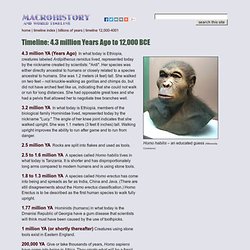

Corpus Scriptorum Latinorum. Sumerian Sky Map of Nineveh.
Historic Holidays. Megalith. Clooneen wedge tomb, the Burren, Co.

Clare, Ireland The word "megalith" comes from the Ancient Greek "μέγας" (megas) meaning "great" and "λίθος" (lithos) meaning "stone. " Megalith also denotes an item consisting of rock(s) hewn in definite shapes for special purposes.[1][2][3] It has been used to describe buildings built by people from many parts of the world living in many different periods. A variety of large stones are seen as megaliths, with the most widely known megaliths not being sepulchral.[4] The construction of these structures took place mainly in the Neolithic (though earlier Mesolithic examples are known) and continued into the Chalcolithic and Bronze Age.[5] Early stone complexes in eastern Turkey[edit] At a number of sites in eastern Turkey, large ceremonial complexes from the 9th millennium BC have been discovered.[6] They belong to the incipient phases of agriculture and animal husbandry.
Middle Eastern megaliths[edit] European megaliths[edit] Tombs[edit] Mesolithic[edit] Timeline: 4.3 million Years Ago to 4500 BCETimeline. 4.3 million YA (Years Ago) In what today is Ethiopia, creatures labeled Ardipithecus ramidus lived, represented today by the nickname created by scientists: "Ardi".

Her species was either directly ancestral to humans or closely related to a species ancestral to humans. She was 1.2 meters (4 feet) tall. She walked on two feet – not knuckle-walking as gorillas and chimps do, but did not have arched feet like us, indicating that she could not walk or run for long distances. She had opposable great toes and she had a pelvis that allowed her to negotiate tree branches well. 3.2 million YA In what today is Ethiopia, members of the biological family Hominidae lived, represented today by the nickname "Lucy. " 2.5 million YA Rocks are split into flakes and used as tools. 2.5 to 1.6 million YA A species called Homo habilis lives in what today is Tanzania. 1.8 to 1.3 million YA A species called Homo erectus has come into being and spreads as far as India, China and Java.
The Human Journey. World-Mysteries.com.
LA. ARQ. SITIOS. NA. Traditions of the Sun : Ancient Astronomy. Calendars Through The Ages. Ancientscrips. Digital Dead Sea Scrolls. Pleiades. MAPAS. Media/pdf/2743.pdf. Esclavos en un Galeón. Trans-Atlantic Slave Trade. Roll over names of designated regions on the map above for descriptions of the role of each in the trans-Atlantic slave trade.

The North American mainland played a relatively minor role in the trans-Atlantic slave trade. Its ports sent out less than five percent of all known voyages, and its slave markets absorbed less than four percent of all slaves carried off from Africa. An intra-American trade in slaves – originating in the Caribbean - supplied additional slaves, however. This region was exceptional in the Americas in that a positive rate of natural population growth began relatively early, thus reducing the dependence of the region on coerced migrants. The Caribbean was one of the two major broad regional markets for slaves from Africa. Brazil was the center of the slave trade carried on under the Portuguese flag, both before and after Brazilian independence in 1822, and Portugal was by far the largest of the national carriers.
The Evolution of Western Dance Music! Pick a year, click refresh, and TRAVEL THROUGH TIME.